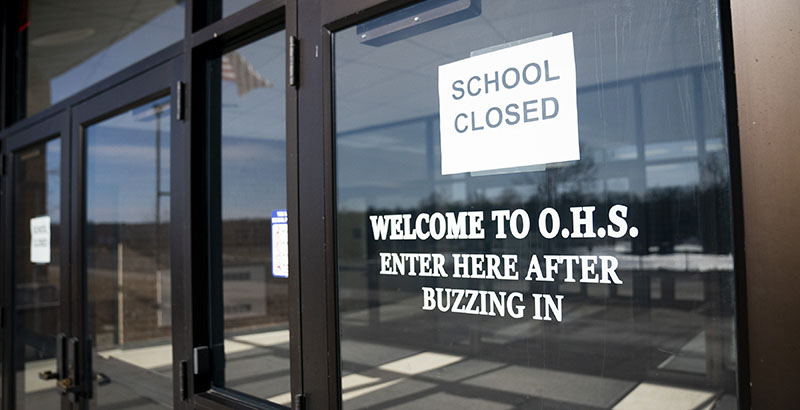Analysis: Education Leaders Must Act to Keep Teachers, Students and Families Safe From Coronavirus. Here’s a Road Map for Them to Follow

The snowballing spread of COVID-19 across the United States has left education leaders — from superintendents and principals to teachers and nonprofit executives — with lingering uncertainty about overall organizational preparedness, gaps in proximate public health infrastructure and continuity planning.
In a moment that demands action, many are wondering what to do next and how to do it.
Education leaders don’t know where to turn for reliable, nonpartisan, scientific advice that can inform their organizational response.
Additionally, mixed messages regarding the severity of the situation, the absence of reliable virus testing at scale and the lack of easily understandable mitigation tools have created the potential for operational paralysis.
Given what we are learning about the inconsistent federal response and what we still do not know about the virus itself, local education leaders will play a critical role in planning and implementing a sound community-level response.
That means they will once again be asked to do something heroic: keep us healthy.
To support this monumental task, we are open-sourcing A Roadmap for Education Leaders to Respond to COVID-19.
The document is based on plans we developed and implemented for Fortune 100 enterprises with direct interaction with consumers. It is also informed by our experience working on the federal response to the 2014 Ebola epidemic and in operational disaster-response management at the New York City Department of Education.
The road map provides a “when to do what” framework to coordinate planning activities and bring structure to the response of an expectedly disruptive and chaotic event. This road map does not deal with matters of instruction.
Specifically, the road map includes tactics to help school leaders, district and charter school administrators, leaders from state education agencies and executives of community-based organizations:
- Mitigate an outbreak of COVID-19 cases at organizational facilities;
- Facilitate early detection of new infections; and
- Create systems that support data collection, monitoring and communication that can scale in the event of a fully developed pandemic.
Achieving these goals will not be easy. That is why this road map guides organizational activities that must be coordinated across the enterprise, including:
- Facility access control;
- Surveillance, screening and triage of students, employees and stakeholders;
- Infection control and precautions; and
- Communications, policy and education.
Recognizing that the outbreak of COVID-19 may extend into a second and third wave over the next 12 to 18 months, the framework is also forward-looking. It takes into account the potential progression of the outbreak and how organizations should subsequently respond.
President John F. Kennedy famously said, “The time to repair a roof is when the sun is shining.”
Unfortunately, the storm of COVID-19 is directly overhead. Education leaders must act now. We hope this resource helps.
Dr. Mario Ramirez is an emergency medicine physician and managing director of Opportunity Labs. During the 2014-15 Ebola outbreak in West Africa, he served as the acting director for pandemic and emerging threats in the Office of Global Affairs at the U.S. Department of Health and Human Services. Andrew Buher is the founder and managing director of Opportunity Labs. He is a former chief operating officer of the New York City Department of Education, where he worked on large-scale disasters response, including Hurricane Sandy.
Get stories like these delivered straight to your inbox. Sign up for The 74 Newsletter

;)
